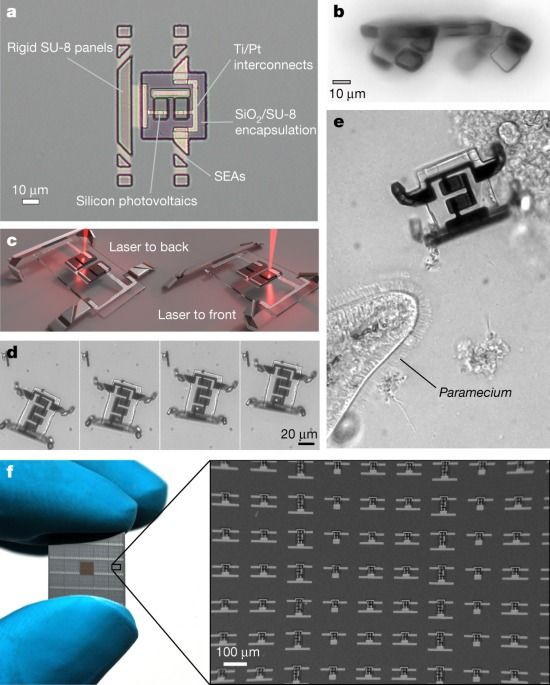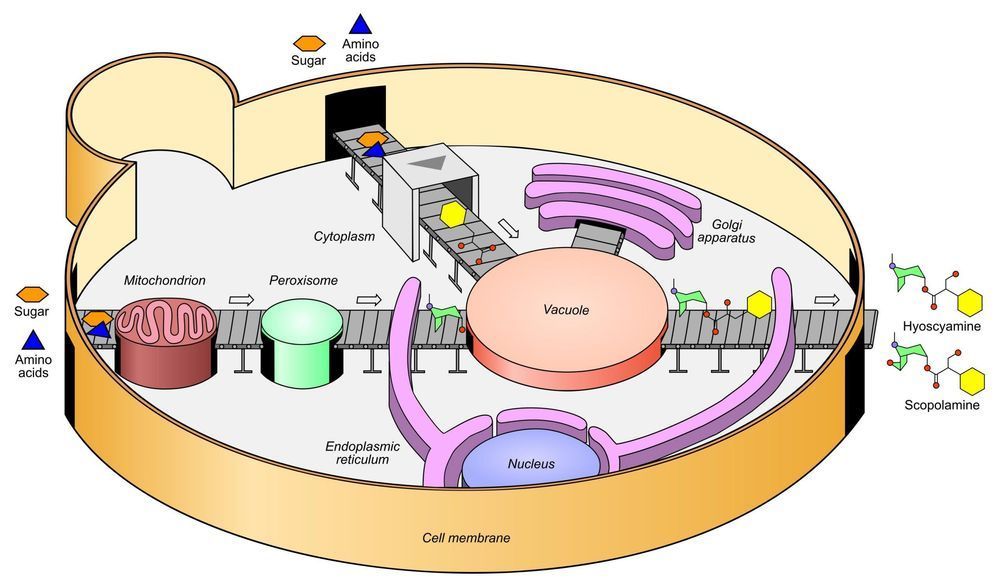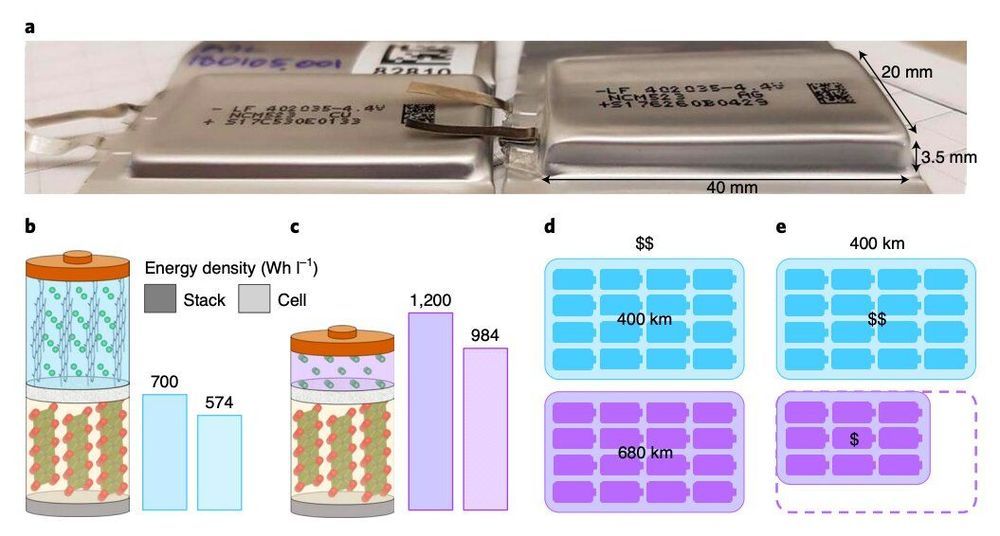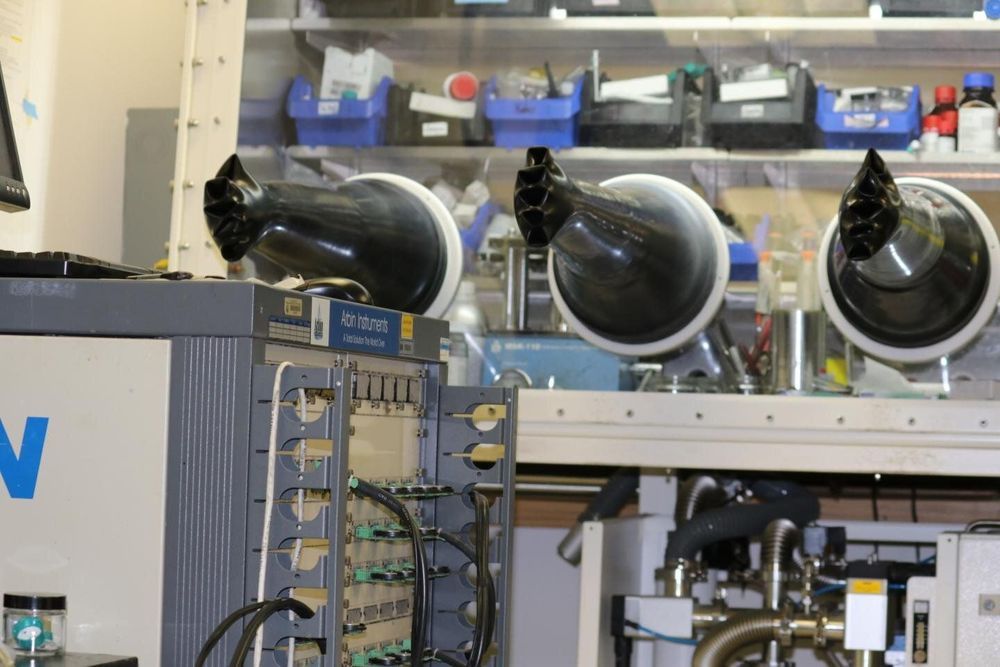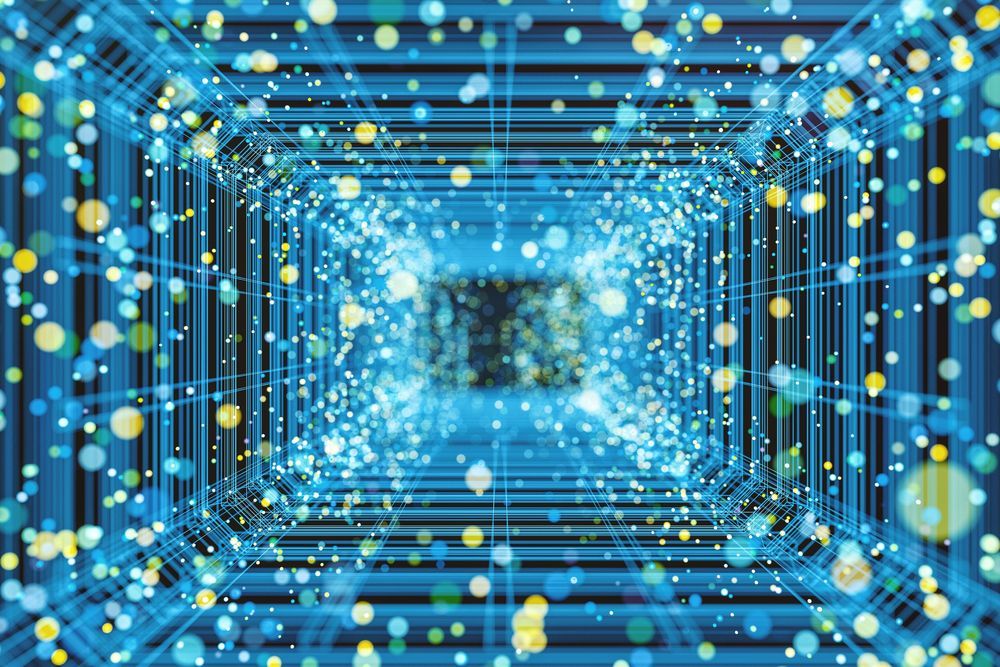Sep 8, 2020
Electronically integrated, mass-manufactured, microscopic robots
Posted by Saúl Morales Rodriguéz in categories: chemistry, robotics/AI
Fifty years of Moore’s law scaling in microelectronics have brought remarkable opportunities for the rapidly evolving field of microscopic robotics1,2,3,4,5. Electronic, magnetic and optical systems now offer an unprecedented combination of complexity, small size and low cost6,7, and could be readily appropriated for robots that are smaller than the resolution limit of human vision (less than a hundred micrometres)8,9,10,11. However, a major roadblock exists: there is no micrometre-scale actuator system that seamlessly integrates with semiconductor processing and responds to standard electronic control signals. Here we overcome this barrier by developing a new class of voltage-controllable electrochemical actuators that operate at low voltages (200 microvolts), low power (10 nanowatts) and are completely compatible with silicon processing. To demonstrate their potential, we develop lithographic fabrication-and-release protocols to prototype sub-hundred-micrometre walking robots. Every step in this process is performed in parallel, allowing us to produce over one million robots per four-inch wafer. These results are an important advance towards mass-manufactured, silicon-based, functional robots that are too small to be resolved by the naked eye.
